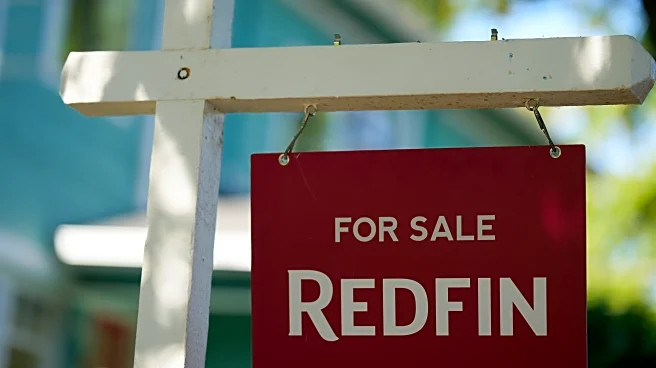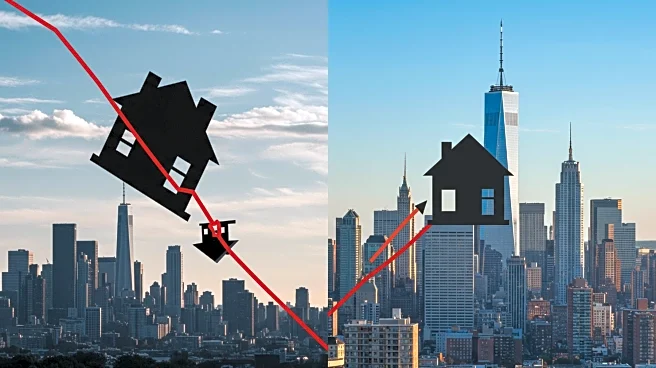Rapid Read • 7 min read
The average rate for a 30-year U.S. mortgage has decreased to 6.58%, marking the lowest level in nearly 10 months. This decline provides a boost to prospective homebuyers, potentially revitalizing a stagnant housing market. The drop in rates follows a trend influenced by factors such as the Federal Reserve's interest rate policies and bond market expectations. Despite the decrease, mortgage rates remain elevated compared to historical lows, contributing to a prolonged sales slump in the housing market. Economists predict rates will stay above 6% this year, with forecasts suggesting a slight easing to around 6.4% by year-end.
AD
The reduction in mortgage rates could enhance affordability for homebuyers, potentially increasing home sales and stimulating the housing market. Lower borrowing costs may encourage refinancing, as evidenced by a recent surge in refinance applications. However, affordability challenges persist, with home prices remaining high. The rate decrease may not be sufficient to significantly alter market dynamics, but it offers some relief to buyers and homeowners seeking refinancing options. The broader economic implications include potential impacts on inflation and consumer spending, influenced by the Federal Reserve's monetary policies.
The housing market may see increased activity if rates continue to decline, encouraging more buyers to enter the market. The Federal Reserve's upcoming decisions on interest rates could further influence mortgage rates and economic conditions. Homeowners may continue to capitalize on refinancing opportunities, while potential buyers assess affordability in light of current market trends. The interplay between inflation, economic growth, and housing affordability will shape future developments in the mortgage industry.
AD
More Stories You Might Enjoy












